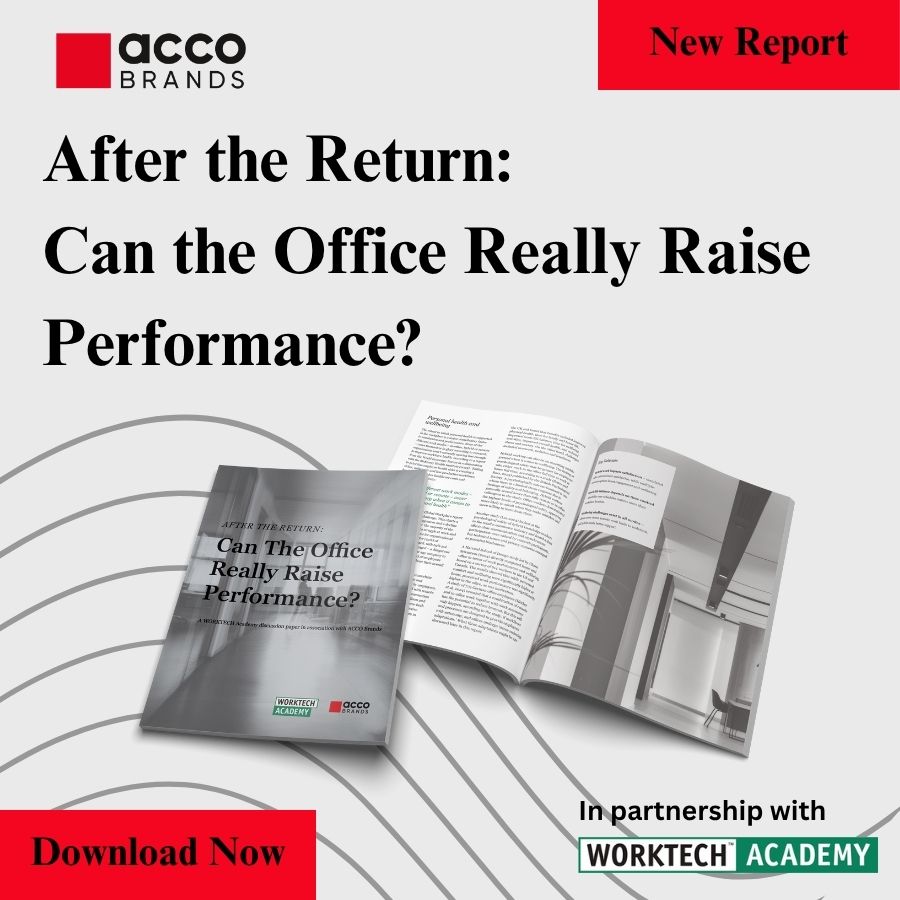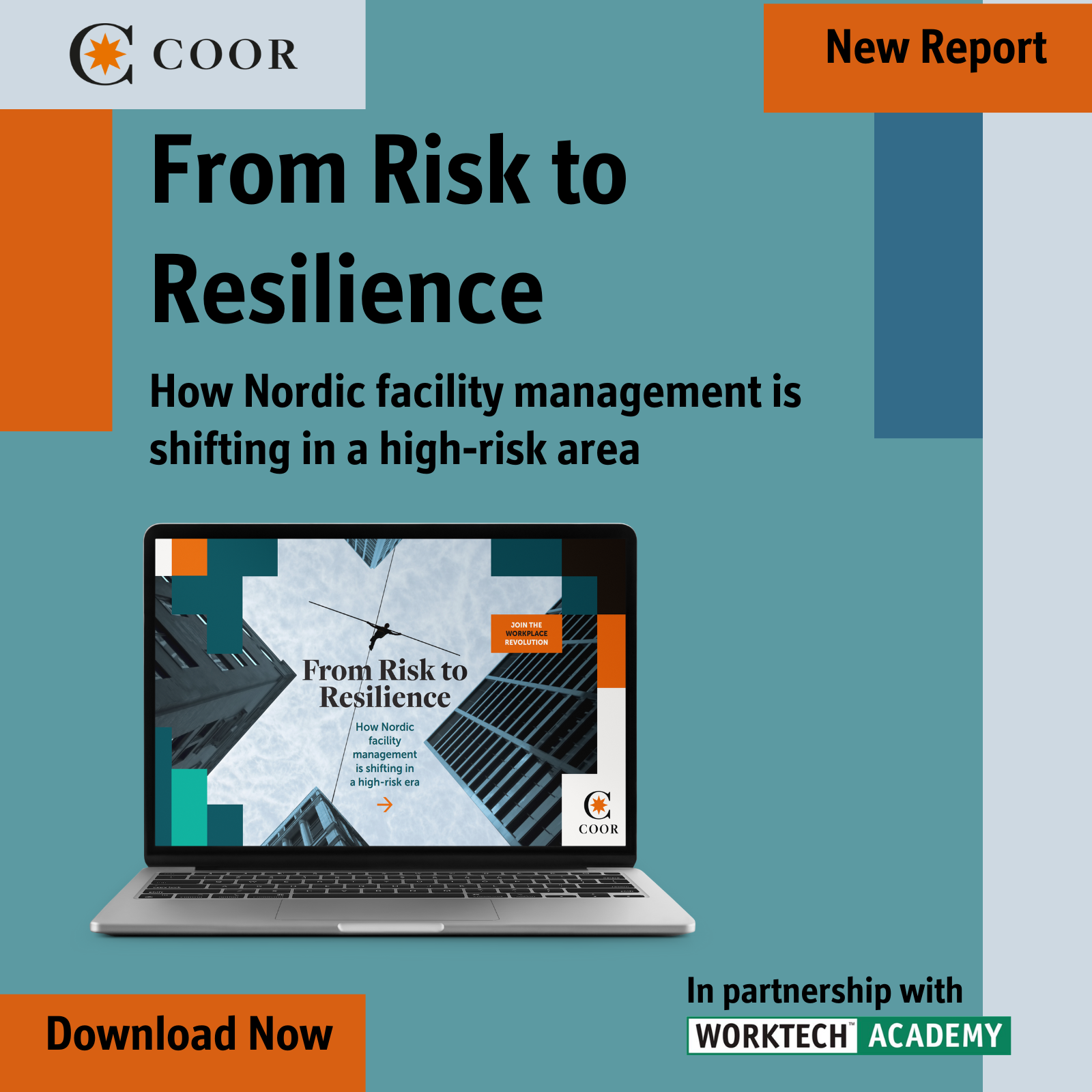Milan marks a moment: lessons from the BCO annual conference
From bold new leadership to candid reflections on brand and experience, the BCO’s Milan conference showed that the workplace is ready for its next big chapter
The British Council for Offices (BCO) turns 35 this year, and what better way to celebrate than gathering experts and enthusiasts across the workplace industry in the northern powerhouse of Milan for its annual conference. A city that proudly pulls away from the rest of Italy as the engine of its GDP.
After more than three decades, the BCO continues to exist with a core goal: to share knowledge, inspire innovation, and champion the best in workplace design. And while engagement has wavered for some over the years, 2025’s gathering reaffirmed why the BCO matters more than ever. And why I think it’s at a pivotal turning point, entering into a new chapter.
The UK workplace industry is estimated to be worth £21 billion, and each year, a fraction of that ecosystem – developers, architects, occupiers, agents, and researchers – congregate at the annual BCO conference to exchange insights, ideas, and inspiration. BCO rotates between a UK-centric location and an international one. For 2025, we touched down in Milan, a city more commonly associated with high fashion and Salone del Mobile. But for three energised days, between 28th to 30th May, the Navigli district played host to all corners of the office industry for a rich schedule of content, tours, networking, and Campari-fuelled aperitivos.
The power of brand, design and quality
This year’s theme, ‘Brand – Making Your Mark’, may have felt a little retro in name, but the conversations it sparked were anything but. Milan reminded us that looking back is not only acceptable but essential. Good economic forecasting, after all, requires a deep understanding of where we’ve come from.
The event kicked off with a grand Milanese welcome. Carlo Alberto Carnevale-Maffé, Associate Professor at Bocconi School of Management and proud resident of Milan, set the scene with an enthralling plenary on the city’s economic regeneration and historical context. Milan is Italy’s beating financial heart, contributing over 10% of the national GDP and hosting more than 4,600 multinational companies, yet it’s also a capital of creativity and culture.

Carlo Alberto Carnevale Maffé opening plenary. Courtesy of Stewart Writtle / BCO
Carlo shared how Milan has transitioned from a post-industrial city to a global innovation and design hub, where infrastructure, economic policy, and sustainability initiatives are interwoven. Synonymous with how consultants are often forgotten in successful workplace stories, Milan is often left out of the renaissance story, with Florence hitting poll position as the driver, owner and gatekeeper. Carlo also explained how work-life balance isn’t a thing in Milan. Work is a part of life – it is therefore simple just ‘life balance’.
From EXPO to Olympics: Milan’s urban metamorphosis
Chris Brett (CBRE) and Manfredi Catella (COIMA) followed up with insight into how Milan’s hosting of Expo 2015 and the forthcoming Winter Olympics have reshaped the urban and real estate landscape. They painted a picture of Milan’s rise on the international property radar.
While Catella downplayed the legacy potential of Olympics when it comes to real estate, I couldn’t help but think about the success of East London’s own transformation post-2012. Repurposing athlete villages for residential and student use was transformational for London, and we’re still feeling the benefits.
A fresh face at the helm
A particular highlight was the fireside chat between Helen Hare, Vice President of Great Portland Estates (GPE) and conference chair, and the newly minted Chief Executive of BCO, Samantha McClary. Formerly editor of Estates Gazette, Sam brings a refreshing energy – and a well-needed jolt of caffeine (that she commented the industry needed) – to the BCO. McClary called for a more human, communicative, and future-focused approach to the workplace. It’s a bold move to put a storyteller at the top of a traditionally property-heavy institution, and I’m all for it. One thing we can always do better, is communicate.

Helen Hare, Vice President of Great Portland Estates (GPE) and the newly minted Chief Executive of BCO, Samantha McClary. Courtesy of Stewart Writtle / BCO
Tours and culture
While some delegates deep-dived into office tours, including innovative fitouts by Microsoft, COIMA’s Porta Nuova district, and the Bosco Verticale (the vertical forest tower, you’ve all seen), I couldn’t resist a cultural detour to the Duomo di Milano and its terraces. Architectural indulgence, with just the right amount of sunshine and a view all the way to the Alps. Taking almost six centuries to build, it felt apt to spend time with 15 other members of the BCO appreciating and reflecting on the fact our planning system and development obstacles really aren’t that bad…
The art of customer experience
Another standout session came courtesy of from Nicola Jones from GPE, Helen Berresford from Sheppard Robson, Andy McBain from NatWest, and Charlie Green, co-founder of The Office Group (TOG), in a session entitled ‘The Art of Customer Experience.’ The group peeled back the layers of what makes for meaningful, memorable workplace experiences – something TOG nailed back in 2003 when it launched, right up until its recent merger with FORA.
Charlie Green stepped down as co-CEO in 2023 and was candid in his reflections on what, and who, helped them achieve success. Ever the maverick, he wasn’t afraid to give architectural teams their dues, calling out standout projects, teams, great bathrooms, and even Wi-Fi as a reason they’ve lost members in the past. But most importantly, he pointed to building staff as the real secret sauce for experience.
TOG has always invested in and valued good design – never veering on quality – and aligned this with people who genuinely care about helping others do their best work and enjoy doing it. As well as design, Green proved he understands the financial and real estate fundamentals, and explained how TOG has always done the groundwork to identify what an area needs, and then crafted a tailored response around it.
NatWest shared the value of mining experience data, using sentiment platforms like Audiem, to gather, analyse, and strategise around how people feel in a space (crucially, not just NPS-style data points), alongside the more mundane but equally important Indoor Environmental Quality (IEQ) insights.
So here we are again, hearing about emotion, brand immersion, and anticipating needs like hospitality and customisation. The savvy are well ahead of the curve, and they already know the right tools to get them there. But it’s always good to be reminded.
Plenary finale – design and brand
To close out, Katy Ghahremani of Make Architects, joined by Alex Bauman-Lyons (AENDRE), Paul Statham (B&B Italia), and Philippa Wagner (PeoplePlacesSpaces) gave an energetic final plenary. The panel explored how brand and design in the workplace are no longer siloed functions, they are strategic tools.
There were nods to hospitality’s evolution is paving the way for offices that feel more like curated lifestyle hubs – shout outs to Hoxton’s _WorkLife brand, Locke, and the now closed PowderMills. They discussed the ‘demographic flip’ in which 2024 marked the first year the global population aged over 65 surpassed those under 15. How will this shift how we think about workplace engagement, longevity, and intergenerational working? Something that warrants more debate.
Looking ahead
Milan gave us a lot of sunshine, robust debates in and out of the conference sessions, and a stunning reminder that brand is more than a logo. It’s a lived experience. Especially in the workplace, where we spend so much of our lives.
The BCO Annual Conference 2025 felt like a reboot, a recharge, and a clear signal that the industry is embracing its next chapter with open arms.
Ciao, for now.
 Esme is a strategist in workplace performance, design, and employee experience. As Strategy Director at BVN Architecture, Esme works on projects across the UK, Europe and Australasia, ensuring workplace strategy translates into effective design. She specialises in interpreting data to guide decision-making, bridging the gap between human sentiments, building performance, and occupancy trends.
Esme is a strategist in workplace performance, design, and employee experience. As Strategy Director at BVN Architecture, Esme works on projects across the UK, Europe and Australasia, ensuring workplace strategy translates into effective design. She specialises in interpreting data to guide decision-making, bridging the gap between human sentiments, building performance, and occupancy trends.







